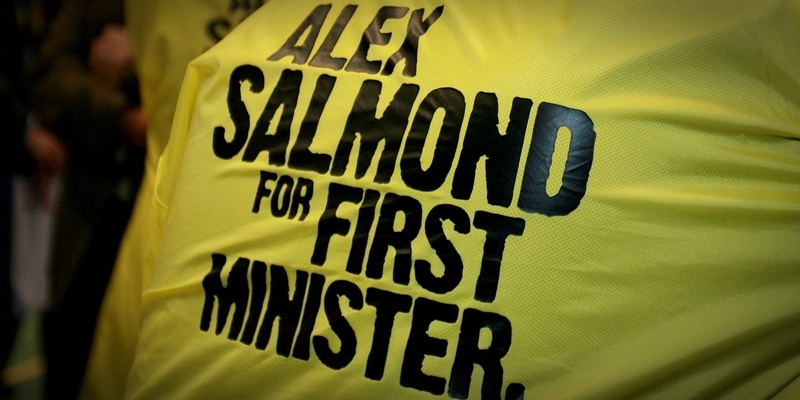The referendum on Scottish independence appeared a step closer as Alex Salmond’s SNP appointed a senior politician to head up its campaign.
Angus Robertson, who guided the party to its historic victory in the Holyrood election, will now turn his attention to convincing the public to vote for separation from the United Kingdom.
The Moray MP was appointed campaign director for all campaigns including the referendum at a meeting of the party’s national executive meeting.
That means he will be in charge of the party’s strategy for bolstering support for independence, which according to recent polls stands at under one third of the Scottish public.
Mr Robertson was campaign director for the SNP’s 2007 Holyrood victory, but it was this year’s success in achieving a parliamentary majority that is viewed as his crowning achievement.
The campaign was widely seen as slicker, better organised and more efficiently run than the opposition parties, particularly in the way it combined traditional media, new media and doorstep canvassing.
First Minister Alex Salmond has expressed his view that the party achieved the shocking landslide victory because they had fought a “positive” campaign that focused on what Scotland could achieve.
After the announcement, Mr Robertson insisted the SNP would campaign for independence in a similar manner.
“The historic election of a majority of SNP MSPs last month shows clear support across Scotland to move the country’s constitution forward,” he said.
“The debate is no longer between change or no change it’s about the kind of change Scotland wants and, above all, the right of the people to choose their future in a free and fair referendum.
“Our commitment during the Scottish Parliament campaign was to trust the people of Scotland to decide our nation’s future in an independence referendum, and that is what we will now deliver.”More powersMr Robertson, who is the SNP group leader at Westminster, added that the “vast majority” of the public support more powers for the Scottish Parliament.
He said they want “the economic and financial clout to fight recession and support recovery, the right to speak up for Scotland in Europe, and the ability to remove Trident nuclear weapons from our waters.”
He continued, “In the days, weeks and months ahead we will set out the case for independence in more depth and detail than ever before.
“We will campaign positively and take our case to the people.”
But opposition MSPs demanded that the SNP give more details on the planned referendum.
Tory deputy leader Murdo Fraser said, “Now that he has been installed as the man in charge of the ‘No to Scotland in Britain’ campaign, perhaps Angus Robertson would like to come clean on when the referendum will be and what the question will be?
“Is he scared to say or doesn’t he know?”
Mr Salmond has said the referendum, which was one of the party’s key manifesto pledges, will take place during the second half of the current five-year Holyrood term.
In the last month, the Nationalists have instead been focusing on further devolution of powers to Holyrood as part of the Scotland Bill currently going through Westminster.
